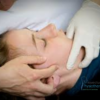In our ever-aging society, ensuring the safety and well-being of our elderly population is a growing concern. Among the numerous challenges they face, the risk of falling looms as a significant threat. However, emerging from the realm of healthcare are two robust strategies that offer promise in fortifying our seniors: physiotherapy interventions and personalized exercise programs. This dynamic duo presents a beacon of hope in the quest to prevent falls among older adults.
The Impact of Tailored Exercises:
Recent studies have shed light on the efficacy of tailored exercise programs in preventing falls among the elderly. A comprehensive meta-analysis, pooling data from 88 trials and nearly 20,000 participants, revealed an encouraging 21% reduction in the rate of falls among community-dwelling older individuals when exercise was utilized as a primary intervention. Notably, exercise regimens that challenged balance and incorporated over 3 hours per week showed a remarkable 39% decrease in falls, emphasizing the importance of tailored and targeted exercises in reducing fall risks (1).
Physiotherapy’s Vital Role:
Physiotherapy interventions play a crucial role in tandem with tailored exercises in preventing falls among the elderly. These interventions are meticulously designed to bolster balance, strength, and proprioception, seamlessly integrating with the potential benefits derived from personalized exercise programs. The expertise of physiotherapy specifically targets areas such as balance, strength, and coordination through individualized therapeutic exercises. These exercises not only enhance muscle strength but also focus on improving stability, a fundamental element in fall prevention among the elderly (2).
Realizing the Collaborative Approach:
A notable randomized clinical trial focused on high-risk older adults who had recently experienced a fall and sought care from a fall prevention clinic. Comparing standard care with a group participating in a home-based strength and balance retraining exercise program, the trial unveiled promising results. The exercise group exhibited a significantly reduced rate of subsequent falls, showcasing the effectiveness of tailored exercises in preventing falls without any reported adverse events related to the intervention (3).
Preserving Health and Autonomy:
The collaborative synergy between physiotherapy interventions and personalized exercise programs is more than a mere treatment approach; it represents a commitment to preserving the health and autonomy of our senior community. This expertly guided and tailored approach aims to empower older adults, ensuring not only their safety but also promoting an enriched quality of life filled with vibrancy and activity (4).
In conclusion, as we navigate the challenges of an aging population, the integration of these strategies signifies a promising trajectory in promoting the well-being and safety of our seniors. This dynamic duo of physiotherapy and tailored exercises serves as a gateway to a future where falls among the elderly are minimized, ensuring a life of security, vigor, and independence. This collaborative and expertly guided approach, underpinned by the tailored expertise of Provectus Physiotherapy, signifies an unwavering commitment to preserving the health and autonomy of our seniors.
References:
- Sherrington, Catherine et al. “Exercise to prevent falls in older adults: an updated systematic review and meta-analysis.” British journal of sports medicine vol. 51,24 (2017): 1750-1758. doi:10.1136/bjsports-2016-096547
- Gschwind, Yves J et al. “A best practice fall prevention exercise program to improve balance, strength / power, and psychosocial health in older adults: study protocol for a randomized controlled trial.” BMC geriatrics vol. 13 105. 9 Oct. 2013, doi:10.1186/1471-2318-13-105.
- Liu-Ambrose, Teresa et al. “Effect of a Home-Based Exercise Program on Subsequent Falls Among Community-Dwelling High-Risk Older Adults After a Fall: A Randomized Clinical Trial.” JAMA vol. 321,21 (2019): 2092-2100. doi:10.1001/jama.2019.5795
- Thomas, Ewan et al. “Physical activity programs for balance and fall prevention in elderly: A systematic review.” Medicine vol. 98,27 (2019): e16218. doi:10.1097/MD.0000000000016218













